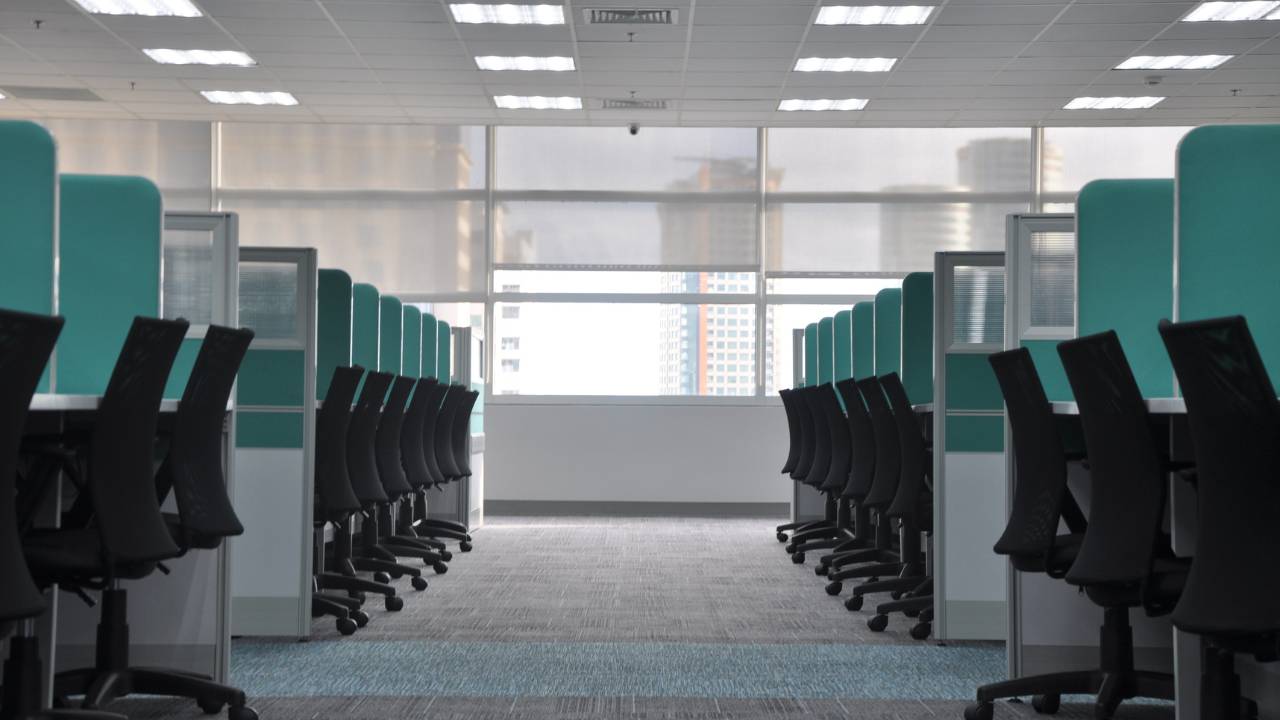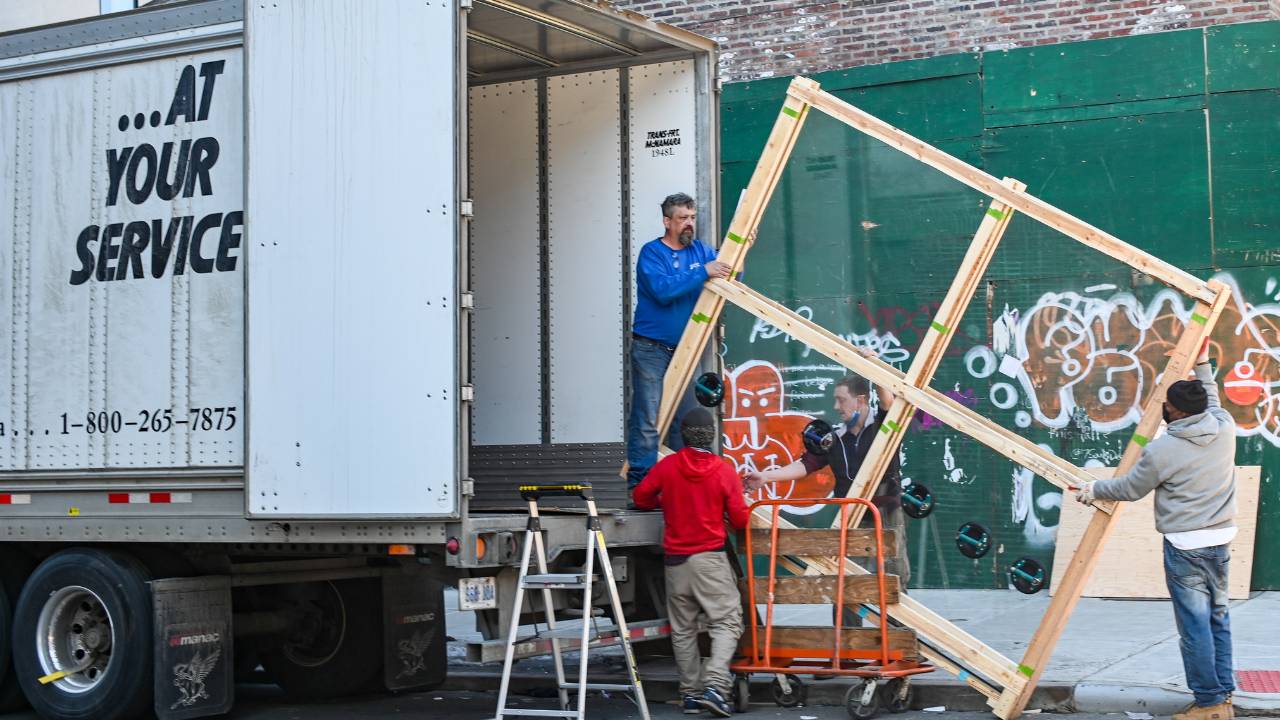Relocating your business can be an exciting but challenging process. It often signifies growth and progress, but the transition may seem daunting. With proper planning and organisation, you can revolutionise your business relocation strategy, ensure a smooth relocation, and minimise disruption to your operations.
Identifying New Location
When considering relocating your business, the first step is to identify a suitable new location. Keep in mind your target market and the needs of your employees, as well as your budget. Start by researching different areas and make a list of potential locations.
Begin by evaluating the transport links in the area. Accessibility is crucial for your staff and clients, so look for locations with good public transport options, ample parking, and connections to main roads. Also, consider the availability of shops, restaurants, and other amenities nearby to make the location attractive to your employees.
Next, consider the size and layout of the potential new space. Ensure there is adequate room for your current team and any growth you anticipate. Think about the layout that would be most productive for your business operations. If specific equipment or facilities are required, include them in your criteria.
Cost is an inevitable factor when choosing a new location. Compare rent, utility, and maintenance costs between potential locations. Assess the value you will receive from each space while keeping your budget in mind. Additionally, check for any available financial incentives or grants in targeted areas that could offset some of your relocation expenses.
It is essential to understand the demographics of your desired location. Knowing the local population and their needs can help you tailor your products or services effectively. Study the area’s economic climate and explore potential competitors to ensure you are making informed decisions.
Lastly, research local regulations. Familiarise yourself with employment, building, and zoning laws to avoid potential legal pitfalls. This will also help to ensure a smooth transition when relocating your business.
Developing a Relocation Plan

Timeline Planning
When relocating your business, it’s essential to develop a well-thought-out timeline. Start by setting a clear target date for your move and work backwards to create a schedule. Remember to set deadlines for tasks such as selecting a new location, signing leases, and informing employees of upcoming changes. Make sure to take into account any major holidays, busy business seasons, or possible disruptions that may impact your moving timeline.
Budgeting for Relocation
It’s crucial to establish a comprehensive relocation budget which ensures a smooth transition without compromising your business finances. Consider all the costs involved, such as hiring professional movers, purchasing new equipment, and the potential loss of revenue due to the move. Don’t forget to include less obvious expenses, such as insurance, security deposits, and any penalties related to breaking leases. To avoid financial surprises, always allow a little extra in your budget for unforeseen costs.
Creating a Comprehensive Checklist
A detailed checklist is an essential tool in managing your business relocation. Start by listing all tasks that need to be accomplished before, during, and after the move. Some examples include:
- Researching and selecting a new location
- Informing employees, customers, and suppliers about the relocation
- Arranging for utilities and services to be transferred
- Securing all required permits and licenses
Organise your checklist by priority and establish deadlines for each task. Regularly review and update your checklist to ensure nothing is overlooked. Delegate responsibilities to your team members where appropriate, and involve them in the planning process to foster a collaborative effort.
Communicating the Move
Informing Stakeholders
When relocating your business, it’s important to communicate the move to key stakeholders. This includes employees, suppliers, and clients. First, develop a communication plan outlining what information needs to be shared and when. Use appropriate channels like meetings, emails, or even phone calls to discuss the move.
Be transparent about the reason for the relocation and any benefits that will come with it. Explain how the move will impact day-to-day operations and any changes stakeholders should anticipate. Keep the tone friendly and reassuring, highlighting your focus on minimising disruptions.
Updating the Company Website
Don’t forget to update your company website with the new address, contact information, and any important announcements related to the relocation. This ensures your clients are informed about the changes and can easily reach your business at the new location.
Make these changes easy to find by displaying them prominently on your homepage or creating a dedicated news section. You could also consider sending out an email bulletin to clients and suppliers with updated information.
Choosing a Moving Company

When you’re planning to relocate your business, it’s crucial to find a reliable and professional moving company to ensure a smooth transition. To help you make the right decision, follow these friendly tips.
First, research is key. Look up moving companies in your area and read customer reviews online. For instance, Halton Removals has built a strong reputation and could be a great option to consider. Ask for recommendations from friends, family, or business partners too.
Next, compare quotes from at least three different moving companies. This will give you a better idea of the price range and services offered. Make sure the quotes are detailed so you can compare them easily. Pay attention to:
- The size and type of vehicles
- Additional services (packing, storage, etc.)
- Availability of insurance coverage
It’s essential to ask questions during this stage. Find out how long they’ve been in business and if they have experience handling your specific type of business move. Also, inquire about available insurance options and if their staff are trained in proper handling procedures.
Assembling a Professional Team
When relocating your business, it’s crucial to assemble a professional team of experts to ensure a smooth transition. By involving the right individuals from the start, you can minimise potential setbacks and keep your business running efficiently.
Involving the IT Department
Your IT department plays a vital role in the relocation process. From planning and coordination to physically moving equipment, these team members should be among the first you consult. Getting their input early on can help identify potential challenges and streamline the whole process.
Before the move begins, ensure that the IT department is involved in establishing a detailed plan for the following:
- Organising and labelling equipment
- Safely packing and transporting hardware
- Reconnecting devices and setting up networks
Including them in the planning stage will make the IT team feel valued and ensure they’re fully prepared on a moving day, reducing downtime.
When assembling your professional team, it’s essential also to involve a reputable moving company with experience handling business relocations. These moving companies have specialised knowledge and equipment to make sure your move is as seamless as possible. A moving company can provide:
- Packing materials and services specific to office equipment
- Vehicle and equipment-sized transportation for machinery and furniture
- Insurance coverage for damage or loss during the move
Addressing Legal Considerations
When you’re relocating your business, it’s essential to address legal considerations to ensure a smooth transition. In this section, we will focus on reviewing permits and licenses.
Reviewing Permits and Licences
First, familiarise yourself with the specific permits and licences required in your new location. Regulations can vary between cities and countries, so it’s essential to do your research. To avoid any disruptions, start this process early in your relocation planning.
Make a detailed list of all the permits and licences that are relevant to your industry and the type of work your company performs. These may include:
- Building permits
- Environmental approvals
- Liquor licences
- Health permits
- Food handler’s permits
Reach out to local authorities and regulatory bodies in your new location to confirm if you need any additional documents or if there are any specific requirements for your business. You may also need to consider any tax implications if necessary.
When applying for permits and licences, double-check the processing timelines to appropriately plan your business relocation. Some permits could have lengthy approval processes, so be prepared for this.
Finally, make sure your employees are fully informed about the upcoming changes. Update your company’s policies and procedures to reflect the new requirements, and consider providing training to your staff if required.
Organising Logistics
Taking Inventory
When relocating your business, it’s crucial to take a thorough inventory of your assets. List all your equipment, furniture, and supplies, as well as their condition and value. This will help you determine which items are worth transporting and what may need to be replaced. It also allows you to allocate resources correctly and safeguard against potential loss or damage during the move. Tip: Use a spreadsheet to organise your inventory and track the progress of your relocation.
Arranging Transportation
Once you’ve taken stock of your inventory, you need to arrange for transportation. Research and compare various transport options, considering cost, efficiency, and reliability. Obtain quotes from several reputable companies and choose the one that best suits your needs and budget. Don’t forget to factor in any potential delays or disruptions, and ensure you’re aware of any restrictions on transport, such as size and weight limitations. Finally, confirm the collection and delivery dates with the transportation company and keep an open line of communication throughout the process.
Planning for Storage
If your new location isn’t immediately ready for your items, you may need to plan for storage. Look for climate-controlled facilities with adequate security and insurance coverage. Evaluate the accessibility, size, and cost of each option, taking into consideration the length of time your items will be stored. When possible, visit the storage site to ensure it meets your expectations and requirements. It’s also essential to label and organise your items systematically, making it easier to locate and retrieve them when needed.
Securing the New Office Space

Arranging Office Furniture
After relocating your business, arranging office furniture in the new space is crucial. Start with a floor plan that considers the layout and dimensions of the room. As you organise the furniture, keep traffic flow in mind and ensure that pathways remain clear.
When it comes to workstations, allow for adequate space between desks to make the area feel less congested. Position your office equipment, such as photocopiers and printers, in accessible locations. Also, remember to set up a common area for staff to socialise and unwind.
Establishing Security Measures
Keeping your business safe is crucial when relocating. Begin by conducting a thorough risk assessment of the new premises. Identify potential vulnerabilities, such as unsecured doors, windows, and any blind spots in the surveillance system.
To future-proof your business premises, invest in a reliable access control system that limits access to the building and specific areas within. Consider using keycards, security codes, or biometric systems for access. Don’t forget to secure your IT infrastructure as well; firewalls, network security protocols, and regular software updates can help protect your valuable data.
In terms of physical security installation, CCTV cameras and alarms to deter intruders and monitor the premises. Additionally, training your employees on security awareness and protocols, such as reporting suspicious activity, will contribute significantly to a safer working environment.
Ensuring Business Continuity
Relocating your business can sometimes be a daunting task, but with careful planning, you can ensure minimal downtime during the process. To maintain business continuity, it’s important to create a comprehensive relocation plan that covers every aspect of the move.
Start by outlining a clear timeline and assigning responsibilities to your team members. This will help both you and your staff stay organised and focused on the tasks at hand. Identify critical operations and resources that need to be up and running as quickly as possible after the relocation to minimise disruptions. Additionally, communicate with your customers and suppliers in advance so they are aware of the move and can plan accordingly.
Reducing downtime is crucial to a successful business relocation. Make sure to thoroughly evaluate the new location’s infrastructure, such as IT systems and utilities, before the move. This can help prevent any unexpected issues and ensure a smooth transition. When moving day arrives, consider hiring professional movers skilled in transporting office equipment to lessen the chances of damage and delays.
Finally, put a backup plan in place to address potential challenges. This might include temporary workspaces or remote work options for your team to continue their tasks during the move. By anticipating possible obstacles, you can take proactive steps to minimise downtime and maintain business continuity throughout the relocation process.
Executing the Move

Managing the Moving Process
When relocating your business, it’s essential to manage the moving process effectively. Start by creating a detailed timeline and assigning specific tasks to your team members. This will help you stay organised and ensure everyone knows their responsibilities. Break the process down into manageable steps, such as:
- Researching potential new locations
- Obtaining necessary permits
- Packing and labelling office equipment
- Coordinating with a professional removal company
Remember, communication is key to a successful move. Keep your employees informed about the upcoming changes and any updates to the timeline.
Implementing a Smooth Transition
To ensure a smooth transition, it’s vital that you plan for every aspect of the move. This includes:
- Notifying customers and suppliers about your upcoming move
- Ensuring your new premises meet all necessary health and safety regulations
- Coordinating with office space planners, architects, or designers
- Getting IT and phone systems installed and ready to use on moving day
- Moving your inventory or raw materials, if applicable
By considering all aspects of your business, you can reduce the potential for obstacles during the move, minimising downtime and disruption to your operations.
Updating Business Documents
Once you relocate your business, it’s crucial that you update your business documents promptly. This includes:
- Change of address on your website, social media accounts and online directories
- Updating printed materials, such as business cards and marketing brochures
- Informing your banks, insurers, and other financial institutions
- Updating your invoices, letterheads and email signatures
Don’t forget to notify your existing clients and customers about your new location to ensure they can continue to do business with you easily. To be thorough, you might want to send a formal letter or email to each, detailing your new address and any other relevant information.
Post-Relocation Steps
Updating Marketing Materials
After relocating your business, it’s essential to update your marketing materials to reflect your new location. This includes revising your signage, business cards, email signatures, and any online listings. By doing so, you ensure that your customers can easily find and contact your new premises. Updating your marketing materials promptly helps to maintain your professional image and prevent any confusion for clients and partners.
Reviewing Insurance Policies
Relocating your business presents a good opportunity to review your insurance policies. Make sure your new premises are fully covered for potential risks such as theft, fire, and flood. You may need to adjust your current policy or obtain new coverage. It’s also worth checking if your insurance provider offers any discounts for moving to a safer area or installing additional security measures. Taking these steps can safeguard your business and give you peace of mind as you settle into your new location.
Employing Cleaning Services
A clean and well-maintained workspace can positively impact your staff’s morale, productivity, and overall business image. After moving in, consider hiring a professional cleaning service to regularly maintain your new premises. Look for a company that provides comprehensive services such as general cleaning, carpet cleaning, and window cleaning. This way, you can ensure your office remains clean, presentable, and inviting for your employees and clients.
Conclusion
Follow the tips for efficient office relocation outlined above, and moving your business will become a manageable task. Research and choose a suitable location, create a detailed timeline and inform relevant parties. Engage a professional removal company for efficient logistics.
After the move, evaluate and adjust operations for continuous improvement. By maintaining a friendly approach, you’ll not only reduce office-moving stress but also empower your team to embrace the exciting opportunities in your new business abode.



